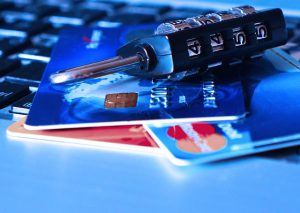How to Prepare for Unexpected Expenses
Spending shocks are large, irregular expenses. According to Bankrate’s 2025 Annual Emergency Savings Report, a significant number of Americans are not prepared for them. The report found that only 41% of people would cover a $1,000 emergency expense from their savings, meaning the majority would have to resort to other means like taking on credit card debt. These shocks are the #1 reason why budgets end up abandoned. So, being prepared for large spending shocks is the best thing you can do to keep your personal finances healthy.
Types of Spending Shocks
There are two types of spending shocks: budgeted and unbudgeted.
Budgeted Spending Shocks

A budgeted spending shock is a big expense you might only see once or twice a year, but you know it’s coming well in advance. This includes things like buying gifts for birthdays or holidays, regular trips to the dentist, and shopping for school supplies.
Budgeted spending shocks, in theory, are easy to manage, since you can include them in your monthly spending plan or budget. Unfortunately, most people don’t revise their budget or spending plan each month, so even expenses that you can expect well in advance can really hurt.
Unbudgeted Spending Shocks
These are unplanned expenses that you don’t see coming. This includes things like car repairs, fixing a broken computer, or replacing lost/stolen items. Unbudgeted spending shocks can be devastating if you are not prepared, since they also tend to be very expensive.
Preparing for Spending Shocks
In a perfect world, there would be no budgeted spending shocks, since these would already be in your monthly budget. However, we don’t live in a perfect world, so we need to be prepared for these shocks to keep them from wrecking our savings goals.
Method One: The Emergency Fund

The first approach is building your own insurance policy in the form of an emergency savings fund. This is also known as an emergency savings fund. This is money you put into a separate savings account with $500 to $2,000, depending on your income.
This account does not count toward your savings goals, nor should it be money used as part of your normal cash used for day-to-day spending. The goal for this fund is to keep the balance constant. It will act as a cushion for spending shocks that could break your budget, so that you don’t damage your savings.
The idea of the emergency savings fund is that you already know these spending shocks will happen, so you have a reserve of cash you can use when needed.
Let’s say you get an unexpected car bill for $250 that you cannot absorb with your regular budget, you can withdraw this amount from your emergency savings fund. Now, in addition to your normal monthly savings goal, you need to add that money back to make it whole. Once you’ve replenished your emergency savings fund back to its constant level, your budget returns to normal.
Method Two: Emergency Credit Card

If you have trouble squirreling away cash, your next option is having a second credit card specifically for emergencies. This credit card may or may not even be in your wallet. You could keep it locked away in a safe place at home. This will help prevent you from using it on impulse purchases.
If you do get hit with a spending shock that breaks your budget, you can take advantage of this credit limit to cover the expense. This is the opposite of a emergency savings fund, your goal is to keep this credit card balance at zero.
If you do need to use your emergency credit card, you should never make the minimum payments!
Once you set aside your normal monthly savings, and pay off your regular bills, you should use as much of your remaining cash as possible to pay off this card. This will help prevent interest charges, and restore your credit limit in case of another emergency.
Method Three: Borrow from Savings
The last, and worst, method is borrowing directly from your savings to pay for any spending shocks. In this case, if you are hit with a big spending shock, you would make a transfer from your savings account into your checking account to pay it off. In the next few months, you pay back this loan, in addition to your normal monthly savings.
This works like the emergency savings fund, but without separating the emergency cash from your normal savings. This is a more dangerous method because it lets you avoid paying yourself back. Making withdraws from your regular savings account should be avoided whenever possible because it’s so easy to forget how much you need to return, and on what time schedule.
With the emergency savings fund or the emergency credit card, you can easily see the exact amount you need to pay back, which helps stick to the plan. Withdrawing from your savings directly lowers your nest egg, and you may not realize the full impact until many years later.
Avoiding Spending Shocks
You can avoid most spending shocks with a bit of planning. By taking 20 minutes each month to do a basic account reconciliation and taking a look at your receipts, you can update your budget or savings plan and know exactly what shocks are coming soon. Adding any budgeted spending shocks into your normal budget is a great way to stay on top of your finances.
You can never be truly prepare for the unbudgeted spending shocks, but taking a few minutes every few months to check the status of your accounts will help. If your car is making a weird sound, it will be a lot cheaper to get a mechanic to do a simple check-up than to wait and pay for an emergency repair at some unexpected time. If you own your home, taking a few minutes twice a year to check the roof for leaks will be far cheaper than finding mold and having to gut half the house.
Think of some of the most devastating spending shocks that could happen, then schedule appointments in your calendar to give yourself a check-up. Preventing emergencies is always cheaper than fixing them later!
Challenge Questions
- Explain what a emergency savings fund fund is in your own words?
- How would having a emergency savings fund fund be beneficial for you and your family?
- How would having regular check-ups help you with your cash flow and savings?